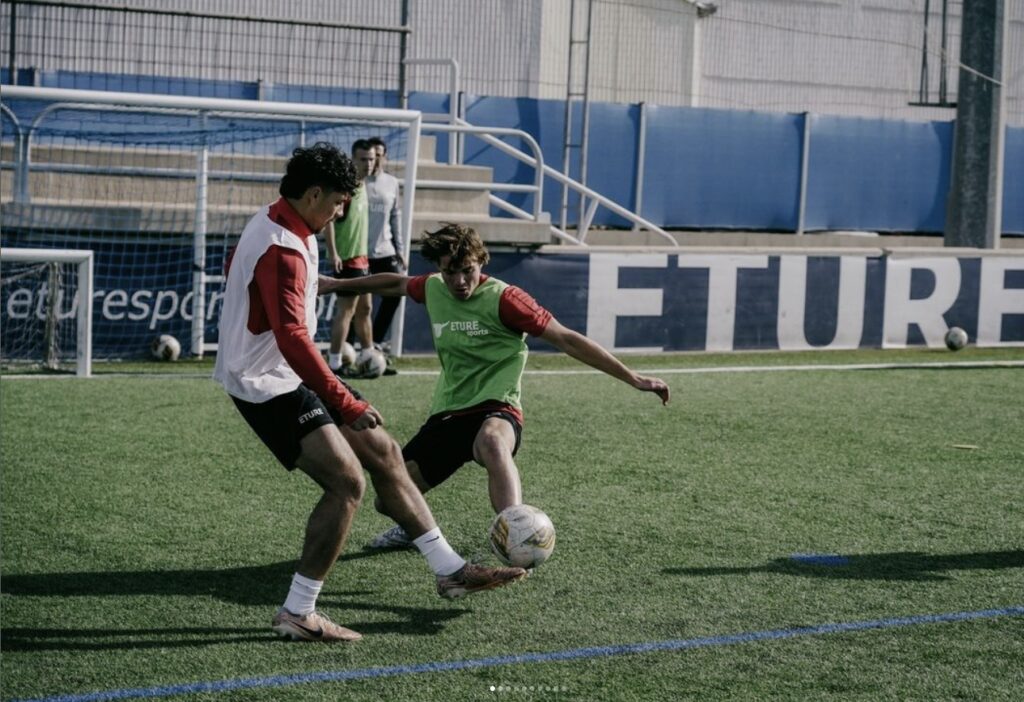College soccer recruiting has changed significantly in the last few years, but in the last few months, it seems to have changed even more! The trends are a little different in men’s soccer compared to women’s soccer, but both have had significant changes. Today’s focus is on men’s college soccer recruiting and next week, I will publish a blog about the trends in women’s college soccer recruiting. You’ll find that some are similar and some are vastly different.
Recruits need to realize this, at all levels, college coaches get paid to WIN! They need to recruit players that give them the best chance to win ASAP. At all levels, college coaches’ livelihoods are attached to if their teams win and so
coaches are recruiting in this fashion.

TRANSFERS / THE TRANSFER PORTAL
The need to win right away and the availability of older, proven players in the transfer portal has led many coaches to focus their energy on filling rosters spots with older players, transfers that will help them right away vs picking up an unproven freshman that needs a year or two of development until they are ready to compete.
Coaches need to win and will have more success with a 20-23-year-old transfer that has proven themself in the college game versus an 18 year old freshman that hasn’t played at that level yet. As I mentioned last week, I think compared to a few years ago, 25%-30% of roster spots are being taken by transfers, leaving the high school senior with up to 30% fewer opportunities than they had in the past.
To me, this means that 25-30% of prospects that in the past would have been considered or offered by NCAA Division I schools are now not being recruited by those levels and have to consider other options if they want to continue to play.
GAP YEAR PROGRAMS
With transfers/older/more experienced players being of higher demand, taking a gap year and attending soccer-only academies, both domestically and abroad, are gaining popularity as a way for players to grow their game to get recruited and maybe even get to a higher level without using a year of eligibility. Like anything, some of these programs I would highly recommend, while others are scams and you need to be careful. As with anything, do your homework and make sure you are picking one that is not going to fall apart and is going to be a positive experience.

INTERNATIONAL RECRUITING
As I have written about it before, many coaches prefer international players. They can often get a more experienced, older player that is capable of making an immediate difference. Oftentimes, these are former professional or academy type players that have hit the end of the road of their quest to be a pro and now can come to the US as a 19-21 year-old and in the process, receive a free or discounted education due to being a good soccer player. Some teams are almost solely made up of internationals at all the levels of college soccer. Recent estimates have 30% of all NCAA Division I and II men’s soccer players as being international student-athletes and I see the trend increasing and actually growing into NCAA Division III. I’d also estimate that JUCO and NAIA
international roster percentages are even higher as well.
LATER RECRUITING
Because of the transfer portal, college coaches, especially at NCAA Division I, are waiting to extend offers to high school prospects as they want to see what they might be able to get in regards to the older, more seasoned transfers first. Then, after the game of musical chairs ends, they might have roster spots for high school seniors. We are seeing college coaches not really know what they need until January/ February, after the dust of the transfer portal has settled from the previous fall season. Just recently, I had eight seniors sign NCAA Division I and II in February and March of their senior year. Prior to this,
they had not had discussions with coaches at those schools, but all of a sudden there was an opening and they were recruited late.
COLLEGE COACHES HAVING TO RE-RECRUIT THEIR ROSTER EVERY YEAR
Because of the ease and popularity of the transfer portal, college coaches are spending more time re-recruiting their own, current student-athletes and trying to convince them NOT to enter the transfer portal.

SCHOLARSHIP MONEY
Scholarship level programs are giving a majority of their scholarship money to transfers and internationals that they know are ready to compete and will help a coach win right away. If you are a late prospect for a school, after the transfer portal changes, expect little or no scholarship money from the coach. They have used it on older players and transfers. If you are lucky enough to still be considered for a scholarship, coaches are looking for kids with good grades and little financial need to fill these spots. They want some kids on their team that are “free” so they can give more scholarships to the immediate impact transfers or international students.
MLS NEXT / ECNL
College showcases in general are less attended than in the past and college coaches have to pick and choose what to attend. Recruiting budgets are smaller than you think and college coaches just don’t have enough time, energy or money to get to every event. College coaches attend events where they can see the most kids at a high level at the same time, this is why MLS Next and ECNL are the most popular recruiting avenues in the current market. But playing in these leagues isn’t always possible and can be quite expensive and it doesn’t guarantee recruitment by any means. Like anything, there is risk/reward and it is important to determine if the ROI (Return on Investment) is worth it is important for you and your family. I don’t think you have to be in these leagues
to get recruited and prospects in these leagues can often struggle to get recruited if they aren’t knowledgeable about the recruiting process and what school could be a good fit. That is where having an advocate, like TSA Recruiting, can help.
ID CAMP CONFUSION
Everyone seems to think they need to go to ID Camps to get recruited. Every college seems to have their own ID camp and there are a bunch of third party ID Camps out there. In some cases, camps are a necessary evil, especially if you want to go to a school far away from home where the coach can’t see you play in person, attending their camp or a camp they are at might help you get your foot in the door. I will be honest, this is rare and even if you do well at a camp, most likely a coach is going to want to see you play in person with your team at some point. I am not a huge fan of camps as I believe more times than not, camps are a money grab. If you do attend these camps, make sure they are hosted or attended by programs that are the right level for you and that you have REAL contact with the coach, not just an email invite and a few emails back and forth. I highly encourage you to try and connect with the coach on a phone call before committing to attend. If you haven’t seen it before, here is a whole article about ID camps and even a camp worksheet to help you prioritize and rate ROI of camps.
Simply put, don’t fall prey to the FOMO that you have to attend camps to get
recruited and that they will help your cause.
College Soccer Recruiting has changed dramatically in the 4 years since I have
started TSA Recruiting. It is harder than ever to get recruited and find a great
fit both on and off the field.
Dan Rothert, founder of TSA Recruiting, has helped almost 200 prospects and their families land opportunities at right fit colleges at all levels. Each prospect has different priorities in what they are looking for in a college and has different qualities that a coach may or may not be looking for. TSA Recruiting leverages Dan’s 24 years of college coaching experience and connections to help those they work with find great opportunities that fit their needs.
To learn more and setup a consult with Dan, click the button below.

